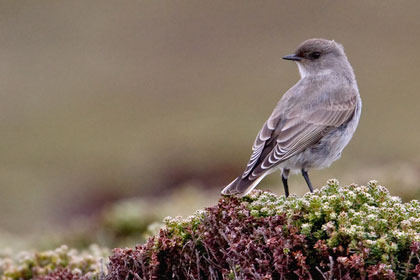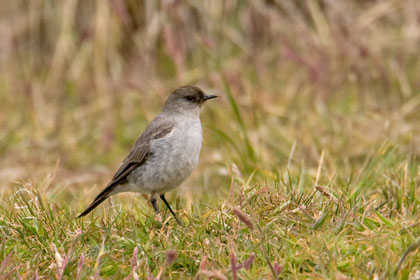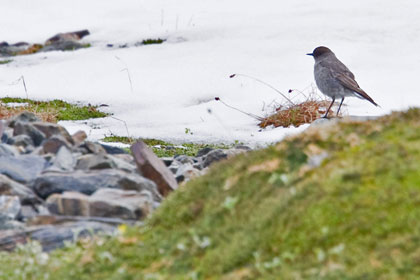The Dark-faced Ground-tyrant (Muscisaxicola maclovianus) is a small passerine bird belonging to the tyrant flycatcher family. It is a ground-dwelling bird of southern South America which feeds on small invertebrates such as flies and moths.
Description
It is 16 cm long with the male being slightly larger than the female. Like other ground-tyrants, it has long legs and an upright posture. The plumage is mainly dark grey-brown above and pale greyish below with a dark brown crown and a blackish face. The rump and tail are black with white outer tail-feathers. The legs and bill are black. Birds on the Falkland Islands (M. m. maclovianus) are larger and greyer than those in mainland South America (M. m. mentalis).
The song is a weak twittering which may be uttered on the ground or in flight.
Habitat and range
The species breeds in southern parts of Chile and Argentina and on the Falkland Islands. It inhabits open areas from sea-level up to 1500 m in the Andes. In the austral winter some birds migrate north as far as Uruguay, northern Argentina and Peru. At this season it moves down to lowland areas and may visit farmland, gardens and beaches.
Reproduction
The nest is placed among rocks and is made of grass and root fibres with a lining of wool or feathers. The two or three eggs are white with red-brown spots. Two broods are probably raised during the breeding season.



